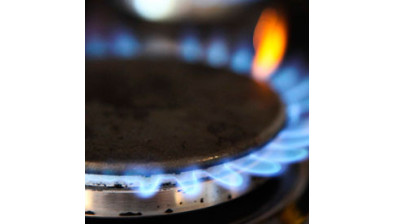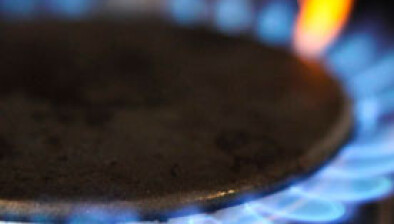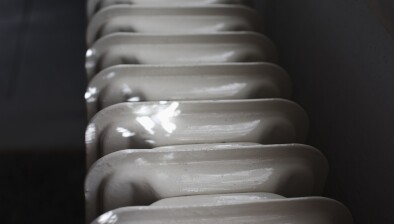 A quarter of households are still struggling with fuel poverty as new Scottish Government statistics revealed no real progress over the last 12 months.
A quarter of households are still struggling with fuel poverty as new Scottish Government statistics revealed no real progress over the last 12 months.
The new figures revealed a small fall in fuel poverty rates between 2016 and 2017, with a drop from 26.5% (649,000 households) to 24.9% (613,000 households). In 2017, 7.0% (174,000 households) were living in extreme fuel poverty compared with 7.5% (183,000 households) the previous year.
However, fuel poverty rates increased among households that use fuels other than mains gas. Those households using oil as the primary heating fuel saw the greatest increase in fuel poverty rates: 40% of these households are estimated to be in fuel poverty, compared to 26% in 2016. This follows a 24% increase in liquid fuel prices between 2016 and 2017 and is similar to estimated rates in 2014 when prices were even higher.
The statistics on fuel poverty, energy efficiency, the condition of housing, the Scottish Housing Quality Standard (SHQS) and other key descriptors of the occupied housing stock provide the first release of information from the Scottish House Condition Survey (SHCS) for the year January to December 2017.
 While the results show overall fuel poverty remaining at similar levels from the previous year, the Scottish Government insisted that changes are evident in the following subgroups:
While the results show overall fuel poverty remaining at similar levels from the previous year, the Scottish Government insisted that changes are evident in the following subgroups:
While the overall fuel poverty rate in 2017 is similar to 2016, this follows a period of annual decreases between 2014 and 2016 and it is the lowest rate recorded by the survey since 2005/06. Households in local authority housing saw an improvement in fuel poverty rates: 28% are estimated to be in fuel poverty, compared to 36% in 2016. Households using gas as their primary heating fuel have continued to see improving fuel poverty rates in 2017. This is likely to be due, at least in part, to gas prices continuing to fall though not as steeply as in 2016. Consequently, fuel poverty rates fell in the last year for households living in urban areas, from 24% in 2016 to 21% in 2017, widening the gap when compared to rural areas (43%). The survey found that no real change to the 63% of fuel poor households who are also income poor, defined as having incomes above the poverty threshold (£313 per week before housing costs for a couple without children).
Fuel poor households are more likely to report difficulties staying warm in winter. 22% of them say that their heating keeps them warm in winter “only sometimes” (15%) or “never” 6%), compared to 18% of all other households. The proportion for Scotland as a whole, 19%, is similar to 2016 rates. 7% of fuel poor households report that they cannot afford to heat their home, higher than the 4% of non-fuel poor households.
 Citizens Advice Scotland’s energy spokesman, Craig Salter, said the statistics show that Scotland still faces “a great challenge” in eradicating fuel poverty.
Citizens Advice Scotland’s energy spokesman, Craig Salter, said the statistics show that Scotland still faces “a great challenge” in eradicating fuel poverty.
He added: “It is evident that more radical action is needed to bring down prices and make energy more affordable.
“While the slight reduction in fuel poverty among those using mains gas is welcome, it is important to recognise the significant price hikes from suppliers since 2017.”
Addressing some of the detail of the figures, Mr Salter said: “Fuel poverty has increased among households that rely on electricity, oil or other fuels for heating, amid significant price increases from suppliers. Electric heating is already extremely expensive. Our research shows that people using electric heating are more likely to be on a low income and require specialised support.
“Meanwhile the number of oil heating users in fuel poverty increased from 26 to 40% over the period, and oil prices continue to rise. This confirms what our research found earlier this year – that fuel prices and fuel poverty rates are highly volatile for this group.
“The Scottish Government’s Fuel Poverty Bill and new Fuel Poverty Strategy are positive steps forward, but these statistics show us that all of the drivers of fuel poverty tackled. With rising energy prices offsetting improvements in energy efficiency, the focus must also include reducing the price of energy and improving how energy is used. CAS will continue to work with the Scottish Government to ensure that the Bill reflects the needs and experiences of Scottish Households, and to ensure that the new Fuel Poverty Strategy includes robust measures to eradicate fuel poverty once and for all.”
The survey shows that the long-term trend in the energy efficiency of the housing stock continues to improve:
In 2017, 42% of Scottish homes were in the highest energy efficiency bands, C or better, and half had an energy efficiency rating of 67 or higher (SAP 2012). This is a significant increase from 39% in 2016 and continues the trend of improvement since 2014, the first year in which data based on SAP 2012 was available. In the last year, the share of properties built between 1945-1964 and post-82, in band C or better, increased by 6 percentage points to 37%, and 5 percentage points to 74% respectively. Using SAP 2009 allows the longer-term trend to be explored and shows strong improvement in the energy efficiency profile of housing. The share of the most energy efficient dwellings (rated C or better) increased from 24% in 2010 to 46% in 2017. In the same period, the proportion of properties in the lowest EPC bands (E, F or G) more than halved, reducing from 27% to 13%. The share of homes with lofts insulated to 100 mm or more was 94% in 2017 which is similar to 2016. This represents an increase of 12 percentage points on 2010 levels. Â 30% of lofts had a high standard of insulation (300 mm or more), a similar level to 2016 Levels of wall insulation remained similar to 2016, with 18% of solid wall dwellings and 75% of cavity wall dwellings having insulation in 2016. However, the data demonstrates a long-term trend of improvement in wall insulation, with the proportion of insulated cavity walls increasing by 9 points and the proportion of insulated solid walls increasing by 7 percentage points since 2012. Wall insulation measures continue to be delivered under energy efficiency programmes such as ECO and the SHCS data suggests that this is having an impact, although sample size limitations mean the difference in the last year is not statistically significant. Levels of disrepair, and other housing quality indicators remain stable at 2016 levels:
The level of disrepair was unchanged in 2017, with 68% of all dwellings having some degree of disrepair, however minor. Disrepair to critical elements stood at 50%, while 28% of dwellings had some instances of urgent disrepair, and in 5% of the housing stock some extensive disrepair was present. These also all similar to 2016. Levels of damp and condensation improved slightly compared to 2016. Over 9 out of 10 properties (91%) were free from any damp or condensation, an increase from 89% in 2016. The SHQS failure rate in the social sector was 37%, not allowing for abeyances and exemptions which are taken into account by the Scottish Housing Regulator. This has fallen from 60% in 2010. 26% of social homes did not meet the Energy Efficient criterion. SHCS surveyors may not always be able to identify the presence of cavity wall insulation. The overall SHQS failure rate in the social sector would be 25% if it is assumed that all social dwellings have insulated cavity walls where this is technically feasible. The majority of dwellings falling below the SHQS failed on a single criterion; this accounts for more than 9 out of 10 failures in the social sector. For almost 8 out of 10 social homes which failed the SHQS this was due to falling short on a single one of the 55 elements making up the standard. Compliance with the tolerable standard in 2017 remained similar to 2016: 1% (or 24,000) of all dwellings fell below the tolerable standard. This represents an improvement of 3 percentage points since 2012. Overcrowding levels in Scotland remain unchanged: 3% of all households (66,000) were living in overcrowded accommodation in 2017.
 A quarter of households are still struggling with fuel poverty as new Scottish Government statistics revealed no real progress over the last 12 months.
A quarter of households are still struggling with fuel poverty as new Scottish Government statistics revealed no real progress over the last 12 months. While the results show overall fuel poverty remaining at similar levels from the previous year, the Scottish Government insisted that changes are evident in the following subgroups:
While the results show overall fuel poverty remaining at similar levels from the previous year, the Scottish Government insisted that changes are evident in the following subgroups: Citizens Advice Scotland’s energy spokesman, Craig Salter, said the statistics show that Scotland still faces “a great challenge” in eradicating fuel poverty.
Citizens Advice Scotland’s energy spokesman, Craig Salter, said the statistics show that Scotland still faces “a great challenge” in eradicating fuel poverty.






